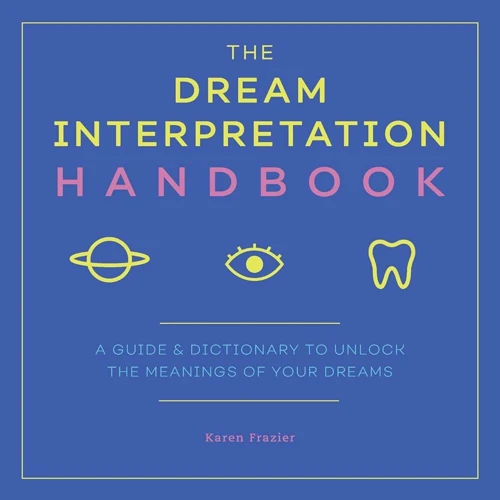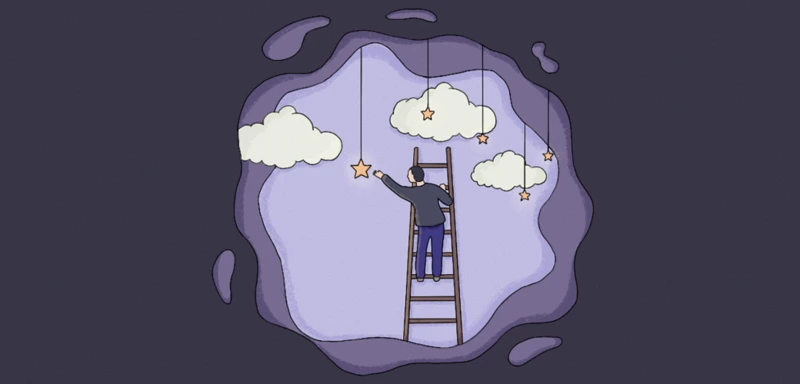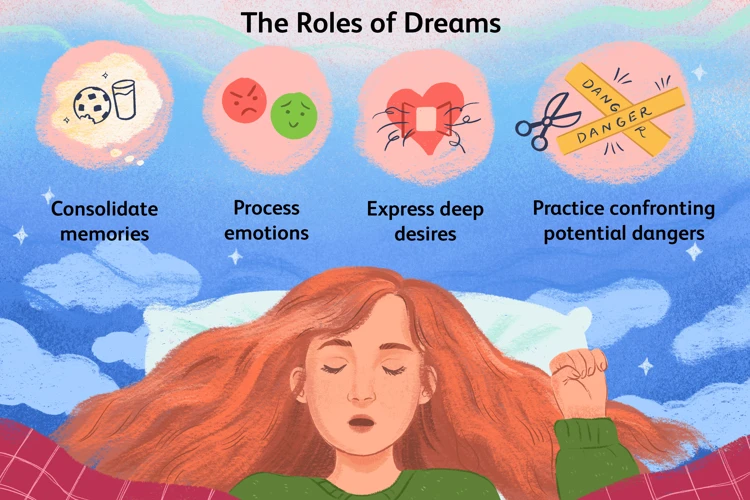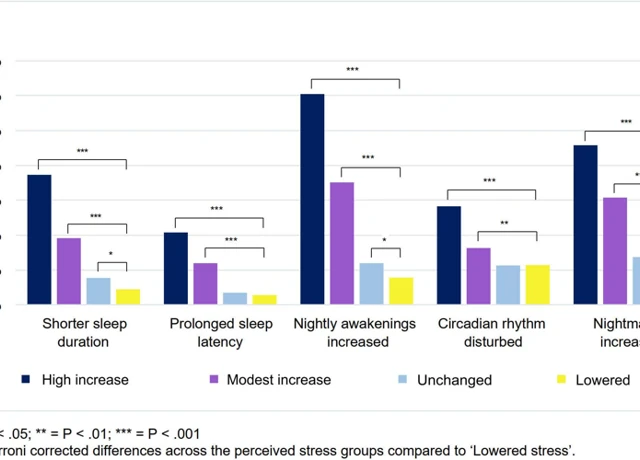Dreams have long been a source of intrigue and mystery, captivating the human imagination with their vivid imagery and enigmatic symbolism. But did you know that dreams can also provide valuable insights into our mental state, particularly when it comes to stress? In this article, we will delve into the fascinating connection between dreams and stress, exploring the impact that stress has on our dreams and how dreaming can in turn affect our mental health. By understanding this intricate relationship, we can begin to unlock the potential of dreams as a tool for stress management and mental well-being. So, join us as we embark on a journey into the realm of dreams and uncover the profound influence they have on our stress levels and overall mental health.
The Basics of Dreams

Dreams are a fascinating phenomenon that occur during the rapid eye movement (REM) stage of sleep. They involve a series of sensory experiences, emotions, and thoughts that typically feel vivid and real. During dreams, the brain processes and organizes information from our daily experiences, memories, and subconscious mind. Dreams can encompass a wide range of content, from mundane occurrences to surreal fantasies. They often incorporate symbolism, which can be interpreted as hidden messages or reflections of our subconscious desires and fears. Some common dream themes include flying, being chased, and encounters with animals. Dreams can be mysterious and puzzling, leaving us with a sense of wonder and curiosity about their meanings and significance. It’s worth noting that recurring dreams or dreams about being chased may carry deeper messages from our subconscious, signaling unresolved issues or fears that we may need to address in our waking lives. Understanding the basics of dreams sets the stage for exploring their connection to stress and their impact on mental health.
1.1 Definition of Dreams
Dreams can be defined as a series of images, thoughts, and emotions that occur during sleep, specifically during the REM (rapid eye movement) stage of sleep. While the exact purpose of dreams is still a subject of debate and research, they are a natural and universal phenomenon experienced by most people. Dreams can range from fleeting fragments to elaborate narratives that seem to transport us to different realms. They can be influenced by our daily experiences, memories, emotions, and even our subconscious desires and fears. Dream content can vary greatly from person to person, with some individuals having more vivid and memorable dreams than others. Symbols and metaphors often appear in dreams, which can be interpreted as messages from our subconscious minds. Decoding the meaning of dreams and understanding the symbolism they contain can provide valuable insights into our inner thoughts and emotions. For example, recurring dreams or dreams about being chased may indicate unresolved issues or fears that we need to address in our waking lives. Exploring the meanings behind these dreams can lead to personal growth, self-discovery, and a better understanding of ourselves. To delve deeper into the topic of dream interpretation and decoding recurring dream messages, click here.
1.2 The Importance of Dreams
Dreams hold significant importance in various aspects of our lives, ranging from psychological well-being to personal growth. They provide a window into the subconscious mind, allowing us to gain insights into our deepest thoughts, emotions, and desires. Dreams play a crucial role in memory consolidation and learning. During sleep, our brains actively process and organize information, helping us retain and make sense of our experiences. Dreams serve as a mechanism to integrate new knowledge and experiences into our existing mental framework. They can assist in problem-solving by presenting creative solutions or alternative perspectives that we may have overlooked during waking hours. Additionally, dreams can have therapeutic value, serving as a platform for processing and resolving emotional conflicts or traumas. By exploring the symbolism and messages within our dreams, we can uncover hidden truths about ourselves and gain a deeper understanding of our inner struggles or desires. Thus, recognizing the importance of dreams offers us valuable opportunities for self-reflection, growth, and even personal transformation. Exploring recurring dream patterns, deciphering the messages behind dreams of being chased, or unraveling the symbolism of animals in dreams can uncover profound insights and guide us on our journey of self-discovery.[link]
The Effects of Stress on Dreams

Stress has a profound impact on our dreams, influencing their frequency, intensity, and content. When we experience high levels of stress, our dreams often become more vivid and emotionally charged. This is because stress activates areas of the brain associated with heightened emotions and arousal, which can carry over into our dream world. Additionally, stress can disrupt normal sleep patterns, leading to fragmented sleep and increased occurrence of nightmares. Nightmares are vivid, distressing dreams that may leave us feeling anxious and fearful upon waking. They can be particularly common when we are facing intense stressors or dealing with unresolved issues in our waking lives. Dreaming about being chased is a common example, symbolizing a sense of being pursued or overwhelmed by stressors. Understanding the effects of stress on dreams allows us to recognize the important role our dreams play in reflecting and processing our mental and emotional state. By deciphering the messages embedded within our dreams, we can gain valuable insights into our subconscious thoughts and fears, ultimately helping us navigate and cope with the stressors in our lives.
2.1 How Stress Affects Dream Patterns
Stress can have a significant impact on our dream patterns, altering the content, intensity, and frequency of our dreams. When we experience stress during our waking hours, it can infiltrate our subconscious mind and manifest in our dreams. One way stress affects dream patterns is by increasing the occurrence of intense and disturbing dreams. Stress-induced nightmares are common and may involve scenarios that reflect our anxieties, fears, or unresolved conflicts. These nightmares can be vivid and emotionally charged, leaving us feeling unsettled upon waking. Additionally, stress can interfere with the overall quality and duration of our sleep, which can disrupt the normal sleep cycle and impede the ability to enter into deep, restorative REM sleep where dreaming occurs. This can lead to fragmented or shorter dream experiences. As a result, individuals experiencing high levels of stress may find their dreams to be fleeting, fragmented, or difficult to remember upon waking. Understanding how stress affects dream patterns is crucial as it sheds light on the intricate relationship between our mental state and the content of our dreams. To decipher the messages hidden within our stress-induced dreams, it can be helpful to explore the symbolism and underlying emotions at play. By delving into the meaning and significance of these dreams, we can gain insights into our subconscious worries and potentially find ways to address and alleviate stress in our waking lives. For more information on interpreting specific dream scenarios, such as dreams about being chased, you can refer to our article on deciphering messages in dreams.
2.2 Stress-Induced Nightmares and Anxiety Dreams
Stress can have a profound impact on the content and frequency of our dreams, often leading to the occurrence of stress-induced nightmares and anxiety dreams. These types of dreams are characterized by intense feelings of fear, unease, and distress. Stress-induced nightmares can be particularly distressing as they often involve vivid and terrifying scenarios, such as being chased, attacked, or facing imminent danger.
Anxiety dreams, on the other hand, are more focused on feelings of apprehension, worry, and nervousness. These dreams may not necessarily involve explicit threats or dangers but instead reflect the underlying anxiety and stress that an individual is experiencing in their waking life. These dreams can manifest as situations where the dreamer feels unprepared, lost, or overwhelmed.
Stress-induced nightmares and anxiety dreams can be a result of the brain’s attempt to process and cope with the heightened stress levels experienced during the day. They can serve as a mechanism for releasing and regulating emotional tension, allowing the individual to process and confront their fears in a safe dream environment.
These types of dreams can also act as warning signals or indicators of excessive stress and anxiety in one’s life. They provide valuable insight into the emotional and psychological state of the dreamer, highlighting areas of potential concern that need to be addressed. By paying attention to these dreams and reflecting on their potential underlying messages, individuals can gain a better understanding of their stress levels and take necessary steps to manage and reduce them.
It’s important to note that stress-induced nightmares and anxiety dreams are a normal response to high levels of stress and do not necessarily indicate severe mental health issues. However, if these types of dreams become frequent, intense, and significantly disrupt one’s sleep or daily functioning, it may be beneficial to seek professional help from a therapist or counselor.
By recognizing the connection between stress and these types of dreams, individuals can begin to proactively address the root causes of their stress, implement stress-reduction techniques, and develop healthy coping mechanisms. It’s crucial to prioritize self-care, relaxation, and stress management strategies to promote better sleep and overall well-being, ultimately reducing the occurrence of stress-induced nightmares and anxiety dreams.
The Role of Dreams in Stress Management

Dreams play a significant role in stress management, acting as a natural coping mechanism for the mind. One way dreams function as a stress management tool is through dream interpretation. By analyzing the symbols, emotions, and experiences in our dreams, we can gain insight into our subconscious thoughts and feelings. This self-reflection helps us identify sources of stress and uncover potential solutions or coping strategies. Additionally, dreams provide an outlet for processing and expressing emotions that may be suppressed or overlooked in our waking lives. They allow us to confront and work through stressful situations in a safe and controlled environment. Dreams can also serve as a form of emotional release, helping to reduce anxiety and promote overall mental well-being. By tapping into the power of dreams, we can harness their therapeutic potential and leverage them as a valuable tool in our journey towards stress reduction and better mental health.
3.1 Dream Interpretation as a Coping Mechanism
Dream interpretation can serve as a valuable coping mechanism for individuals experiencing stress and seeking a deeper understanding of their emotions and subconscious mind. When we interpret our dreams, we engage in a process of introspection and self-reflection that can help us make sense of the complexities and challenges we face in our waking lives. By examining the symbols, themes, and emotions present in our dreams, we can gain insights into our underlying thoughts, feelings, and desires.
One way to approach dream interpretation is to keep a dream journal, recording details of our dreams upon waking. This allows us to capture the essence of the dream before it fades from our memory. We can then analyze these dreams by focusing on the imagery, emotions, and events that stood out to us. Paying attention to recurring symbols or themes can provide further clues to their significance in our lives.
It’s important to remember that dream interpretation is a deeply personal and subjective process. While there are common symbols and interpretations that can serve as guides, the true meaning of a dream is unique to the individual experiencing it. Keeping an open mind and exploring different interpretations can help uncover valuable insights.
Dream interpretation as a coping mechanism can have several benefits. Firstly, it allows us to explore and process unresolved emotions and experiences. Dreams often act as a form of emotional release, allowing us to work through challenging situations or emotions in a safe and symbolic way. By interpreting these dreams, we can gain a sense of closure and understanding, promoting emotional well-being.
Additionally, dream interpretation can help us identify stressors and concerns that may be impacting our mental health. Dreams can provide a window into our subconscious mind, revealing hidden anxieties or fears that we may not be consciously aware of. By bringing these concerns to light, we can take steps to address them and alleviate stress in our waking lives.
Dream interpretation serves as a coping mechanism by providing a platform for introspection and self-reflection. By examining the symbols, themes, and emotions present in our dreams, we can gain valuable insights into our thoughts, feelings, and desires. Dream interpretation enables us to process unresolved emotions, identify stressors, and take proactive steps towards reducing stress and promoting mental well-being.
3.2 Utilizing Dreams for Stress Reduction
Utilizing Dreams for Stress Reduction
One of the intriguing aspects of dreams is their potential to be utilized as a tool for stress reduction. While dreams themselves cannot directly eliminate stress, they can provide insights and serve as a catalyst for self-reflection and problem-solving. Here are some ways in which dreams can be utilized for stress reduction:
1. Dream Analysis: By analyzing the symbolism and themes present in our dreams, we can gain a deeper understanding of our subconscious thoughts and emotions. This self-reflection allows us to identify sources of stress and address them more effectively in our waking lives.
2. Emotional Release: Dreams can provide a safe space for the release of pent-up emotions. Through dreams, we may experience catharsis, allowing us to process and release stress and tension that has accumulated throughout the day.
3. Problem Solving: Dreams can present us with alternative perspectives and creative solutions to problems. By paying attention to the insights and ideas that emerge in our dreams, we can tap into our subconscious mind’s problem-solving abilities and find new ways to approach stressful situations.
4. Lucid Dreaming: Lucid dreaming is a state in which the dreamer becomes aware that they are dreaming while still within the dream itself. This awareness provides an opportunity to actively engage with the dream and potentially guide its content. By practicing lucid dreaming techniques, individuals can consciously create positive and calming dream scenarios to reduce stress and promote relaxation.
5. Visualization and Manifestation: Dreams can serve as a visualization practice for achieving stress reduction and overall well-being. By visualizing positive and calming dream scenarios before sleep, and even during waking hours, we can program our subconscious mind to manifest similar experiences in our dreams and ultimately reduce stress.
6. Incorporating Dreams into Daily Life: Keeping a dream journal and reflecting on dreams can be a useful habit for stress reduction. Recording dreams upon waking and revisiting them later can provide valuable insights into recurring stressors and patterns. Additionally, incorporating themes or symbols from dreams into daily life, such as visualizing dream scenes during stressful moments, can help evoke a sense of calm and reduce stress levels.
Utilizing dreams for stress reduction requires openness, reflection, and practice. By recognizing the potential of dreams to serve as a source of insight, emotional release, problem-solving, and visualization, individuals can cultivate a deeper connection with their dreams and use them as a powerful ally in their journey towards managing and reducing stress.
The Connection between Dreams, Stress, and Mental Health

Dreams, stress, and mental health are intricately intertwined aspects of our well-being. Our dreams serve as a reflection of our psychological state and can provide valuable insights into our mental health. When we are under stress, our dream patterns may be significantly affected. Stress can disrupt the quality of our sleep and lead to vivid and intense dreams, including nightmares and anxiety dreams. Chronic stress, in particular, can have a profound impact on our mental health, increasing the risk of conditions such as anxiety and depression. Understanding the connection between dreams, stress, and mental health allows us to recognize the importance of managing stress levels and utilizing dreams as a tool for self-reflection and stress reduction. By addressing our stress and promoting positive dreaming, we can take proactive steps towards better mental well-being.
4.1 Dreaming as a Reflection of Psychological State
Dreaming serves as a window into our psychological state, providing valuable insights into our emotions, thoughts, and subconscious mind. When we dream, our mind creates a unique narrative that is influenced by our current psychological state. The content of our dreams can reflect our fears, anxieties, desires, and unresolved conflicts. For example, someone who is experiencing high levels of stress may have dreams that are filled with chaotic situations or scenarios that reflect their feelings of being overwhelmed. Similarly, individuals who are feeling content and fulfilled may have dreams that are peaceful and joyful in nature. Dreams can also bring to the surface emotions and thoughts that we may not be consciously aware of. By examining the symbolism and themes present in our dreams, we can gain a deeper understanding of our underlying psychological state. Keeping a dream journal can be a helpful practice in this regard, as it allows us to record and analyze our dreams over time, identifying patterns and recurring themes that may provide valuable insights into our mental and emotional well-being. By recognizing the connection between our dreams and our psychological state, we can begin to use this knowledge to support our mental health and overall well-being.
4.2 The Impact of Chronic Stress on Mental Health
The Impact of Chronic Stress on Mental Health
Chronic stress can have a profound impact on mental health, affecting various aspects of our well-being. When we experience prolonged periods of stress, it can lead to the development or exacerbation of mental health conditions such as anxiety and depression. The constant release of stress hormones, such as cortisol, can disrupt the delicate balance of brain chemistry, impacting our mood and cognitive function. Chronic stress can also impair our ability to cope with daily challenges, leading to feelings of overwhelm, irritability, and difficulty concentrating.
Chronic stress can contribute to the onset of more severe mental health disorders. Research has shown a correlation between chronic stress and an increased risk of developing conditions such as post-traumatic stress disorder (PTSD), bipolar disorder, and substance abuse disorders. This is because chronic stress can weaken the resilience of our mental health, making us more susceptible to the effects of traumatic events or triggering underlying vulnerabilities.
In addition to its direct impact on mental health, chronic stress can also influence our behavioral patterns and lifestyle choices, further exacerbating the negative effects. People experiencing chronic stress may be more prone to engaging in unhealthy coping mechanisms such as excessive drinking, drug abuse, or unhealthy eating habits. These behaviors not only perpetuate the stress cycle but can also contribute to the development of physical health issues, which in turn can further impact mental well-being.
Recognizing the detrimental impact of chronic stress on mental health is crucial for seeking appropriate support and interventions. Managing stress levels through various techniques such as relaxation exercises, therapy, and lifestyle changes can help mitigate the long-term effects of stress on mental well-being. By understanding the intricate connection between stress, dreams, and mental health, we can take proactive steps towards promoting better psychological resilience and overall well-being.
How to Promote Positive Dreaming to Reduce Stress
Promoting positive dreaming can be a powerful strategy for reducing stress and improving overall well-being. One effective method is creating a relaxing sleep environment. This can involve making sure the bedroom is comfortable, quiet, and free from distractions. Using calming scents, such as lavender, or playing soothing music can also enhance relaxation. Additionally, practicing stress-reduction techniques before bed can help set the stage for positive dreaming. Activities such as meditation, deep breathing exercises, and gentle stretching can help to calm the mind and body, making it easier to enter a relaxed state conducive to pleasant dreams. Another helpful approach is keeping a dream journal to uncover patterns and gain insights into the subconscious. By recording dreams upon waking, one can begin to identify recurring themes, symbols, and emotions, providing valuable information about personal stressors and areas of focus for stress reduction. By implementing these techniques, individuals can take an active role in promoting positive dreams, ultimately reducing stress and enhancing their overall quality of life.
5.1 Creating a Relaxing Sleep Environment
Creating a relaxing sleep environment is crucial for promoting positive dreaming and reducing stress. Here are some key steps to consider:
1. Soothing Lighting: Ensure that your bedroom has soft, dim lighting in the evening to signal to your brain that it’s time to wind down. Avoid bright lights, especially from electronic devices, as they can interfere with melatonin production and disrupt your sleep.
2. Noise Control: Minimize noise distractions by using earplugs, playing soothing ambient sounds, or investing in a white noise machine. Silence or gentle sounds can help create a calming atmosphere conducive to restful sleep and pleasant dreams.
3. Comfortable Bedding: Choose a comfortable mattress, pillows, and bedding materials that suit your preferences. The right level of comfort can help you relax and drift off into a peaceful slumber, enhancing the quality of your dreams.
4. Temperature Regulation: Keep your bedroom at a cool, comfortable temperature. A slightly cooler room can promote better sleep and decrease the likelihood of restless dreams caused by overheating or discomfort.
5. Declutter and Organize: Create a clean and clutter-free bedroom environment. A tidy space can promote relaxation and peace of mind, allowing you to sleep deeply and experience more positive dreams.
By implementing these strategies, you can transform your sleep environment into a serene oasis that encourages restorative sleep and sets the stage for rejuvenating dreams. Remember, creating an inviting sleep space is an essential step in managing stress and promoting overall mental well-being.
5.2 Practicing Stress-Reduction Techniques before Bed
Practicing stress-reduction techniques before bed can have a significant impact on the quality of our sleep and overall well-being. As we prepare for sleep, it’s important to create a calming and relaxing environment that promotes a restful state. One effective technique is progressive muscle relaxation, where we systematically tense and then release each muscle group in our body, promoting physical relaxation and release of tension. Deep breathing exercises can also be beneficial, helping to slow down our heart rate and activate the body’s relaxation response. Another technique to consider is mindfulness meditation, which involves focusing our attention on the present moment and observing our thoughts and emotions without judgment. This practice can help quiet the mind and alleviate stress before sleep. Additionally, engaging in gentle stretching or yoga can help release physical tension and promote a sense of relaxation. Creating a consistent bedtime routine that incorporates these stress-reduction techniques can signal to our body and mind that it’s time to unwind and prepare for sleep, promoting a more peaceful and restorative night’s rest. Remember, finding the right combination of techniques may take some experimentation, so be open to trying different methods and discovering what works best for you.
5.3 Keeping a Dream Journal to Uncover Patterns
Keeping a Dream Journal to Uncover Patterns: One effective way to explore the connection between dreams and stress is to keep a dream journal. This practice involves recording your dreams in detail immediately upon waking up. By consistently jotting down the elements of your dreams, such as the themes, emotions, and symbols, you can start to identify recurring patterns and gain valuable insights into your subconscious mind. The act of writing down your dreams also helps in remembering them more accurately. In your dream journal, you can use bullet points or create a table to organize the different aspects of your dreams. Additionally, highlighting key words or phrases with tags can draw attention to significant elements. Remember that emotions and symbols are just as important as the events themselves. Over time, as you accumulate entries in your dream journal, you may notice certain patterns or themes that emerge. These recurring elements can provide clues about the sources of your stress and the impact it has on your dream life. By analyzing and interpreting the patterns in your dreams, you can gain a deeper understanding of your subconscious mind and use this insight to manage your stress more effectively. So, grab a journal and pen, keep it by your bedside, and embark on a journey of self-discovery through your dreams.
Conclusion
In conclusion, the connection between dreams and stress is a complex and intriguing one. Our dreams provide insight into our mental state and can be greatly influenced by stress levels. When experiencing high levels of stress, dream patterns may become disrupted, leading to stress-induced nightmares and anxiety dreams. However, dreams can also serve as a valuable tool in managing stress. Dream interpretation can provide a means of understanding and addressing underlying psychological issues that contribute to stress. Additionally, actively utilizing dreams for stress reduction, such as through lucid dreaming or visualization techniques, can promote relaxation and emotional well-being. It’s important to recognize the impact that chronic stress can have on mental health, as prolonged exposure to stress can lead to various mental health disorders. By recognizing the connection between dreams, stress, and mental health, individuals can take steps to promote positive dreaming and reduce stress. Creating a relaxing sleep environment, practicing stress-reduction techniques before bed, and keeping a dream journal to uncover patterns are all strategies that can be employed to promote positive dreaming and overall well-being. By harnessing the power of our dreams, we can gain a deeper understanding of ourselves and take proactive steps towards nurturing our mental health.
Frequently Asked Questions
1. What is the purpose of dreaming?
Dreams serve several purposes, including processing emotions, consolidating memories, problem-solving, and offering insights into our subconscious mind.
2. Can stress affect dream patterns?
Yes, stress can have a significant impact on dream patterns. It can lead to more vivid dreams, increased frequency of nightmares, and disrupted sleep, which can influence the content and intensity of our dreams.
3. Are there any common symbols or themes in dreams?
Yes, dreams often incorporate symbols that can vary from person to person. However, common themes include flying, falling, being chased, losing teeth, and encounters with animals. These symbols can hold personal significance and may reflect our emotions and experiences.
4. How can dream interpretation help with stress?
Dream interpretation can provide valuable insights into our subconscious mind, helping us identify and understand the underlying causes of stress. By analyzing dream symbols and themes, we can gain a deeper understanding of our emotions, fears, and desires, ultimately facilitating stress management and personal growth.
5. Can dreams be used as a tool for stress reduction?
Absolutely! Dreams can be utilized as a tool for stress reduction. Engaging in relaxation techniques and positive visualization before sleep can help promote calm and peaceful dreams, leading to improved sleep quality and reduced stress levels.
6. What is the connection between dreams, stress, and mental health?
Dreams can serve as a reflection of our psychological state, especially during times of stress. Chronic stress can negatively impact mental health, and analyzing dream content can offer insights into underlying anxieties and emotional challenges, enabling us to address and manage stress more effectively.
7. Is there a way to promote positive dreaming?
Yes, there are several ways to promote positive dreaming. Creating a relaxing sleep environment, practicing stress-reduction techniques before bed, and keeping a dream journal to identify patterns can all contribute to more positive and restorative dreams.
8. How does chronic stress affect mental health?
Chronic stress can have detrimental effects on mental health, leading to increased anxiety, depression, and a higher risk of developing mood disorders. It can disrupt sleep patterns, impair cognitive function, and negatively impact overall well-being.
9. Is it possible to control what we dream about?
While we cannot completely control our dreams, certain techniques such as setting intentions before sleep, practicing lucid dreaming, and engaging in mindfulness exercises can increase our ability to influence the direction and content of our dreams.
10. Can dreams be used as a form of therapy?
Yes, dreams can be used in therapy as a means of exploring and addressing subconscious issues. Techniques such as dream analysis and dream journaling can aid in self-reflection, personal growth, and the resolution of emotional conflicts.








